Top Raspberry Pi IoT Projects for Developers & Hobbyists
Category: Embedded Systems
Discover Powerful Raspberry Pi IoT Projects to Build Today
If you're a tech enthusiast, hobbyist, or embedded developer familiar with Raspberry Pi and programming languages like Python or C/C++, you're likely searching for innovative IoT projects that push your skills further. Your challenge is finding reliable, creative, and practical Raspberry Pi IoT ideas that balance learning complex embedded system concepts with achievable builds. This guide is crafted to solve that exact need — providing a curated, comprehensive look at top Raspberry Pi IoT projects that leverage sensors, connectivity, automation, and real-world data applications. Unlike generic project lists, we focus on detailed sections covering both hardware integration and software development essentials, including MQTT protocols, cloud interfacing, and secure networking. Whether you aim to create smart home devices, environmental monitoring systems, or industrial-grade embedded applications, this outline offers you a structured, logical path to explore, implement, and scale your IoT ambitions. Read on to unlock versatile project ideas and best practices that suit all skill levels and fuel your passion for embedded systems development with Raspberry Pi.
- Discover Powerful Raspberry Pi IoT Projects to Build Today
- Introduction to Raspberry Pi as an IoT Hub
- Essential Hardware Components for Raspberry Pi IoT Projects
- Setting up the Software Environment for Raspberry Pi IoT Projects
- Building Basic IoT Projects: Step-by-Step Examples
- Networking and Communication Protocols in IoT: MQTT, HTTP, CoAP, and WebSockets
- Advanced Data Handling and Cloud Integration for Raspberry Pi IoT Projects
- Security Best Practices in Raspberry Pi IoT Projects
- Troubleshooting and Performance Optimization in Raspberry Pi IoT Projects
- Showcase of Innovative Raspberry Pi IoT Projects
- Future Trends and Expanding Your IoT Skills with Raspberry Pi
Introduction to Raspberry Pi as an IoT Hub
The Raspberry Pi stands out as a versatile and cost-effective platform for building robust Internet of Things (IoT) hubs. With its compact size, powerful ARM-based processors, and extensive support for popular programming languages like Python and C/C++, the Raspberry Pi offers unparalleled flexibility for embedded systems developers. Its ability to run a full Linux operating system enables developers to design complex IoT applications that require multitasking, data processing, and secure network communication, making it much more than just a simple microcontroller.
Comprehensive Connectivity Options
One of the key reasons the Raspberry Pi excels as an IoT hub is its multiple connectivity options, which allow seamless integration with a broad spectrum of IoT devices and networks:
- Wi-Fi: Built-in Wi-Fi modules (available in Raspberry Pi models 3 and above) enable wireless communication, critical for home automation and cloud-based IoT services.
- Bluetooth: Bluetooth and Bluetooth Low Energy (BLE) support make it easy to connect sensors, wearables, and smart peripherals with low power consumption.
- Zigbee and Z-Wave (via USB dongles or HATs): For mesh network topologies and low-latency device communication, the Raspberry Pi supports Zigbee and Z-Wave protocols through add-on modules, ideal for smart home and industrial IoT environments.
This extensive connectivity ecosystem empowers developers to build scalable, interoperable IoT solutions that can collect, analyze, and transmit real-time data across various network configurations.
Why Raspberry Pi Is Ideal for IoT Projects
- Versatility: Supports a wide variety of sensors, actuators, and communication protocols, enabling diverse IoT use cases from environmental monitoring to industrial automation.
- Strong Community & Documentation: Raspberry Pi boasts one of the largest maker and developer communities, providing rich libraries, tutorials, and open-source tools that accelerate development cycles.
- Edge Computing Capabilities: Unlike simple nodes, the Raspberry Pi can perform edge analytics and decision-making locally, reducing latency and dependence on cloud connectivity.
- Cost-Effectiveness: Affordable hardware with high performance makes it accessible for hobbyists and professional embedded engineers to prototype and deploy IoT solutions efficiently.
Leveraging its powerful processing capabilities, extensive connectivity, and scalable architecture, the Raspberry Pi serves as a dependable and flexible IoT hub platform that bridges sensor networks, cloud services, and user interfaces—making it an indispensable tool for cutting-edge embedded systems development.
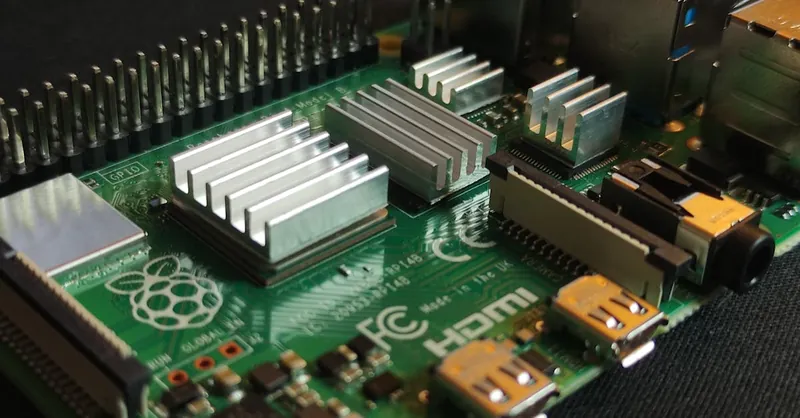
Image courtesy of Mathias Wouters
Essential Hardware Components for Raspberry Pi IoT Projects
Selecting the right hardware components is critical for the success of any Raspberry Pi IoT project. These components form the physical interface between the digital Raspberry Pi and the real world, enabling data acquisition, environment interaction, and effective automation. Understanding the role and types of sensors, actuators, camera modules, and peripheral devices commonly used in IoT designs will help you build reliable, scalable, and innovative projects.
Common Sensors for IoT Applications
Sensors are the backbone of IoT systems, responsible for capturing environmental data that drives decision-making and automation. When working with Raspberry Pi, some of the most frequently integrated sensors include:
- Temperature Sensors: Devices like the DS18B20 or DHT22 allow precise temperature monitoring. These are essential for projects involving climate control, weather stations, or thermal management.
- Humidity Sensors: Often paired with temperature sensors (e.g., DHT22, BME280), humidity sensors help monitor air moisture levels, important for agricultural IoT, smart greenhouses, and indoor air quality systems.
- Motion Sensors: PIR (Passive Infrared) sensors detect movement by measuring changes in infrared radiation, making them ideal for security systems, occupancy detection, and automated lighting.
- Pressure and Gas Sensors: For environmental monitoring and industrial IoT projects, sensors like BMP280 (pressure) and MQ series (gas detection) provide vital data on atmospheric conditions and air quality.
Actuators: Bringing IoT to Life
Actuators convert electrical signals into physical actions, making IoT devices interactive and responsive. Raspberry Pi projects commonly utilize:
- Relays: Enable control of high-power electrical appliances by switching them on or off safely.
- Servo Motors: Provide precise angular movement, ideal for robotics, camera gimbals, and automated valves.
- Solenoids and DC Motors: Used for linear or rotational motion in locking mechanisms, fans, and conveyor belts.
Camera Modules for Visual Data
The official Raspberry Pi Camera Module and its variants are powerful peripherals widely used in IoT for:
- Surveillance and Security: Live video streaming, motion-triggered recording, and facial recognition.
- Computer Vision: Object detection, machine learning inference at the edge, and AI-based analytics.
- Environmental Monitoring: Capturing visual data for plant health, wildlife tracking, or quality control in manufacturing.
Peripheral Devices and Interfaces
Complementing sensors and actuators, various peripheral devices expand Raspberry Pi’s IoT capabilities:
- Display Modules: OLED, TFT, or LCD screens for real-time data visualization and user interface.
- GPIO Expanders and ADCs: Enhance I/O capabilities and enable analog sensor integration beyond Raspberry Pi’s native digital-only GPIO pins.
- Power Management Units: Battery packs, UPS HATs, or solar charging modules to enable autonomous, off-grid operation.
- Communication HATs and Modules: Zigbee, LoRa, or cellular modems for long-range or specialized network connectivity beyond Wi-Fi and Bluetooth.
By carefully combining these hardware components, developers can create sophisticated, energy-efficient, and highly customizable Raspberry Pi IoT systems tailored to a wide range of applications—from smart homes and environmental sensing to industrial automation and edge computing solutions.
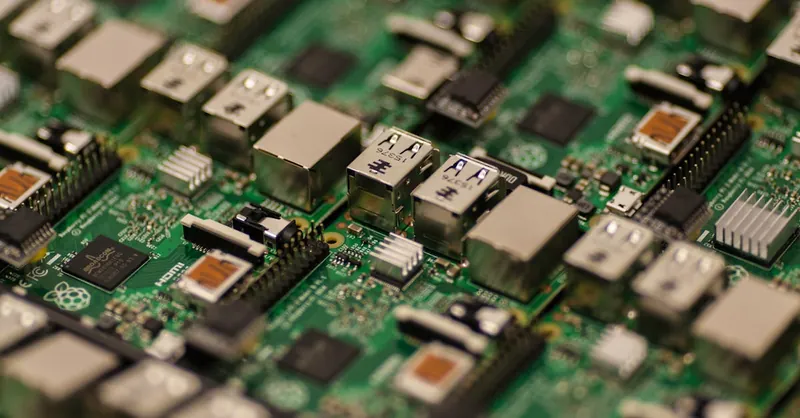
Image courtesy of Craig Dennis
Setting up the Software Environment for Raspberry Pi IoT Projects
To fully harness the power of the Raspberry Pi in your IoT projects, a properly configured software environment is essential. This setup entails installing Raspbian OS (now known as Raspberry Pi OS), configuring development toolchains for both Python and C/C++, and installing key libraries that enable IoT functionality such as MQTT communication, GPIO control, and cloud integration.
Installing Raspberry Pi OS
Start by flashing the latest Raspberry Pi OS onto your microSD card using tools like Raspberry Pi Imager or Balena Etcher. The OS provides a robust, Debian-based Linux environment optimized for the Pi’s hardware and supports a myriad of programming languages and IoT frameworks out of the box. During initial setup:
- Enable SSH for remote access, which is crucial for headless IoT deployments.
- Connect to Wi-Fi or Ethernet to ensure internet access for installing packages and SDKs.
- Perform system updates (
sudo apt update && sudo apt upgrade) to get the latest security and performance improvements.
Configuring Python and C/C++ Toolchains
Both Python and C/C++ are foundational for Raspberry Pi IoT development, offering flexibility from high-level scripting to low-level hardware control.
-
Python Environment: Raspberry Pi OS includes Python pre-installed. Use
pip3to manage packages, and consider creating virtual environments to isolate project dependencies. Popular Python libraries for IoT includepaho-mqttfor MQTT client functionality andRPi.GPIOfor direct hardware pin control. -
C/C++ Development: Install essential build tools with
sudo apt install build-essential cmake. Usegccorg++compilers for compiling IoT firmware, and leverage libraries such as WiringPi or pigpio for GPIO access. Setting up debugging tools likegdbwill enhance embedded development workflows.
Installing Essential IoT Libraries and SDKs
For seamless integration with IoT protocols and cloud platforms, install the following critical libraries:
-
Paho MQTT Library: Enables the Raspberry Pi to act as an MQTT client, communicating efficiently with brokers for lightweight messaging—a cornerstone of many IoT architectures.
-
GPIO Control Libraries: Besides the standard
RPi.GPIO, advanced projects may usegpiozerofor simplified pin control or thepigpiodaemon for hardware PWM and remote GPIO manipulation. -
Cloud SDKs: Depending on your cloud backend (AWS IoT, Google Cloud IoT, Azure IoT), install respective SDKs to enable secure device provisioning, telemetry data upload, and remote command execution. These SDKs often support both Python and C/C++, bridging embedded devices and the cloud effortlessly.
By setting up a comprehensive software environment with these tools, Raspberry Pi developers can ensure robust application development, real-time sensor data processing, and secure cloud connectivity—key pillars for successful and scalable Raspberry Pi IoT projects.
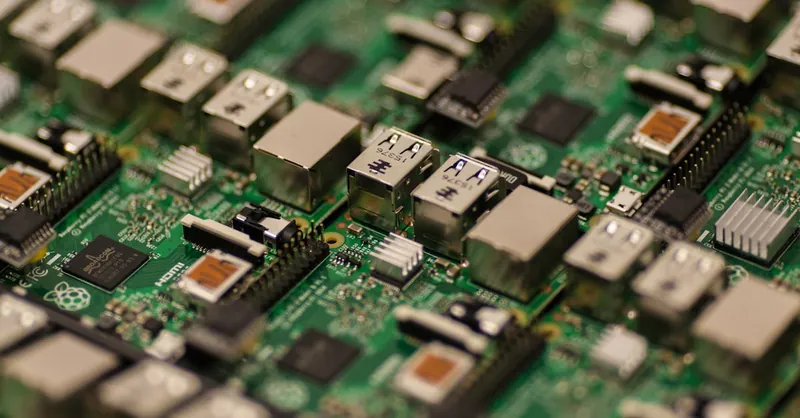
Image courtesy of Craig Dennis
Building Basic IoT Projects: Step-by-Step Examples
Getting hands-on with simple Raspberry Pi IoT projects is the best way to solidify your understanding of embedded systems development, hardware interfacing, and real-time data communication. Below, we explore three foundational IoT projects—a temperature logger, a motion detector, and a smart light controller—that showcase practical sensor integration, Python coding, and circuit wiring essentials to jumpstart your IoT journey.
1. Temperature Logger with DS18B20 Sensor
A temperature logger collects environmental data over time and stores or transmits it for analysis—an introductory yet powerful IoT project demonstrating sensor reading, file I/O, and optional cloud upload.
Components Needed:
- Raspberry Pi (any model with GPIO pins)
- DS18B20 waterproof temperature sensor
- 4.7kΩ resistor (for sensor pull-up)
- Breadboard and jumper wires
Wiring Diagram:
- Connect DS18B20 VCC to Raspberry Pi 3.3V pin
- Connect GND to Raspberry Pi ground
- Connect Data pin to GPIO4 (Pin 7)
- Place 4.7kΩ resistor between VCC and Data line to act as a pull-up resistor
Basic Python Code Snippet:
import os
import time
# Enable 1-Wire interface; ensure 'w1-gpio' and 'w1-therm' modules are loaded
BASE_DIR = '/sys/bus/w1/devices/'
DEVICE_FOLDER = [d for d in os.listdir(BASE_DIR) if d.startswith('28-')][0]
DEVICE_FILE = BASE_DIR + DEVICE_FOLDER + '/w1_slave'
def read_temp_raw():
with open(DEVICE_FILE, 'r') as f:
lines = f.readlines()
return lines
def read_temp():
lines = read_temp_raw()
while lines[0].strip()[-3:] != 'YES':
time.sleep(0.2)
lines = read_temp_raw()
equals_pos = lines[1].find('t=')
if equals_pos != -1:
temp_c = float(lines[1][equals_pos+2:]) / 1000.0
return temp_c
if __name__ == '__main__':
while True:
temp_celsius = read_temp()
print(f"Current Temperature: {temp_celsius:.2f}°C")
with open("temperature_log.csv", "a") as log:
log.write(f"{time.strftime('%Y-%m-%d %H:%M:%S')},{temp_celsius:.2f}\n")
time.sleep(60) # Log temperature every 60 seconds
This project can be extended by integrating MQTT to publish temperature readings to a cloud server, enabling remote monitoring and automated data analytics.
2. Motion Detector Using PIR Sensor
Motion detection is key for security and automation systems. Leveraging a Raspberry Pi and a PIR (Passive Infrared) sensor, you can detect movement and trigger alerts or device actions.
Required Hardware:
- Raspberry Pi
- PIR motion sensor module
- Jumper wires and breadboard
Wiring Instructions:
- PIR sensor VCC to Raspberry Pi 5V
- GND to Raspberry Pi ground
- OUT pin to GPIO17 (Pin 11)
Python Code Example:
import RPi.GPIO as GPIO
import time
PIR_PIN = 17
GPIO.setmode(GPIO.BCM)
GPIO.setup(PIR_PIN, GPIO.IN)
def motion_detected(channel):
print("Motion Detected!")
GPIO.add_event_detect(PIR_PIN, GPIO.RISING, callback=motion_detected)
try:
print("PIR Module Test (CTRL+C to exit)")
while True:
time.sleep(1)
except KeyboardInterrupt:
print("Quit")
finally:
GPIO.cleanup()
This basic implementation can be enhanced by integrating camera modules to capture images on detection, sending real-time notifications via MQTT or email, or activating alarms and smart lights for automated response.
3. Smart Light Controller with Relay Module
Controlling home lighting via Raspberry Pi is a classic home automation project that combines hardware switching and software control.
Components:
- Raspberry Pi
- Relay module (5V)
- Light bulb or LED representing a lighting fixture
- Jumper wires
Wiring Overview:
- Relay VCC → Raspberry Pi 5V
- Relay GND → Raspberry Pi ground
- Relay IN pin → GPIO27 (Pin 13)
- Relay to switch the light circuit (ensure safe mains wiring practice or use low-voltage test setups)
Python Control Script:
import RPi.GPIO as GPIO
import time
RELAY_PIN = 27
GPIO.setmode(GPIO.BCM)
GPIO.setup(RELAY_PIN, GPIO.OUT)
try:
while True:
print("Light ON")
GPIO.output(RELAY_PIN, GPIO.HIGH)
time.sleep(5)
print("Light OFF")
GPIO.output(RELAY_PIN, GPIO.LOW)
time.sleep(5)
except KeyboardInterrupt:
pass
finally:
GPIO.cleanup()
By integrating MQTT, you can remotely toggle the relay using smartphone apps or voice assistants. Additionally, logic can be added to automate lighting based on time schedules, ambient light sensors, or motion detection events.
These projects illustrate core principles of Raspberry Pi IoT development including sensor data acquisition, GPIO control, event-driven programming, and the foundation for scalable connectivity with MQTT and cloud services. Following these step-by-step examples equips you to build more complex, secure, and responsive IoT systems tailored to your embedded programming expertise.
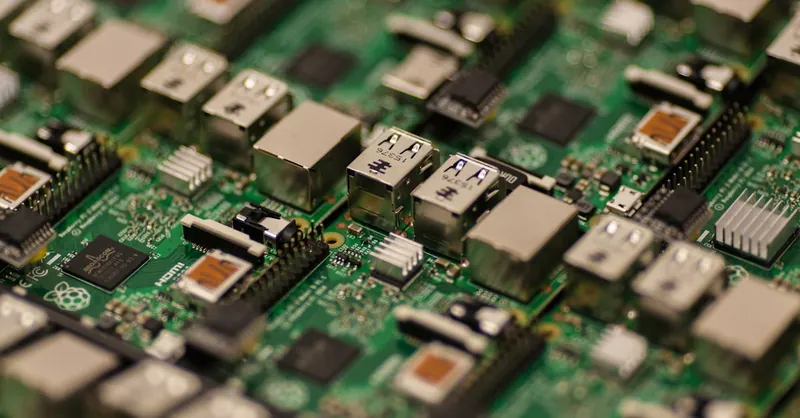
Image courtesy of Craig Dennis
Networking and Communication Protocols in IoT: MQTT, HTTP, CoAP, and WebSockets
Efficient and reliable networking and communication protocols form the backbone of any IoT system, enabling seamless data exchange between Raspberry Pi devices and cloud services. Understanding and implementing the right protocols not only optimizes bandwidth and power consumption but also ensures secure, scalable, and real-time IoT deployments. Let’s explore the essential protocols widely used in Raspberry Pi IoT projects: MQTT, HTTP, CoAP, and WebSockets, and how to utilize them effectively in your IoT applications.
MQTT: Lightweight Messaging for IoT
MQTT (Message Queuing Telemetry Transport) is the de facto standard protocol for IoT due to its lightweight design and efficient publish-subscribe architecture. It excels in low-bandwidth, high-latency, or unreliable networks, making it ideal for Raspberry Pi devices communicating sensor data to cloud brokers like Mosquitto, AWS IoT Core, or Azure IoT Hub.
- MQTT clients on Raspberry Pi can be implemented using Python’s
paho-mqttlibrary or C/C++ MQTT libraries such as MQTT-C. - The protocol facilitates asynchronous messaging, where sensors publish data to specific topics and other devices or cloud services subscribe to those topics, enabling decoupled, scalable communication.
- Supports QoS (Quality of Service) levels to guarantee message delivery, which is critical in industrial and mission-critical IoT deployments.
- Secure connections using TLS/SSL can be established to protect data integrity and privacy.
HTTP: Ubiquitous and Easy-to-Integrate Protocol
While not as lightweight as MQTT, HTTP (Hypertext Transfer Protocol) remains popular in IoT projects due to its simplicity and compatibility with existing web infrastructures:
- Raspberry Pi devices can send sensor telemetry or receive commands using RESTful APIs, leveraging Python’s
requestslibrary or C-based HTTP clients. - Best suited for less frequent data transmissions or command and control operations, HTTP’s request-response model is straightforward but less efficient for continuous streaming.
- Easily integrates with cloud platforms offering HTTP endpoints, such as Google Cloud IoT or custom backend servers.
- Can be combined with JSON or XML payloads to structure IoT data exchanges effectively.
CoAP: Specialized Protocol for Constrained Devices
CoAP (Constrained Application Protocol) is designed specifically for resource-constrained devices and networks, providing a compact, RESTful messaging framework over UDP rather than TCP:
- Ideal for Raspberry Pi projects requiring low power consumption and multicast communication within local networks.
- Supports request-response and asynchronous messaging patterns, making it a lightweight alternative to HTTP.
- Enables easy integration with IoT platforms supporting CoAP and facilitates interoperability in heterogeneous IoT ecosystems.
- Python implementations like
aiocoapallow Raspberry Pi to act as CoAP clients or servers.
WebSockets: Real-Time Bidirectional Communication
For interactive IoT applications requiring real-time data streams and low-latency bidirectional communication, WebSockets offer a robust solution:
- WebSocket connections keep a persistent TCP connection open between Raspberry Pi devices and servers or cloud services, allowing instant messaging without repeated HTTP requests.
- Widely used in smart home interfaces, dashboards, or live sensor monitoring applications where immediate feedback is essential.
- Can be implemented using Python libraries like
websocketsor C++ alternatives for embedded environments. - Supports secure transmission via WSS (WebSocket Secure) protocols, protecting IoT data exchanges.
Implementing IoT Messaging Between Raspberry Pi and Cloud Services
To enable smooth communication between your Raspberry Pi and cloud platforms using these protocols, consider the following implementation tips:
- Choose the appropriate protocol based on project requirements—MQTT for scalable, efficient messaging; HTTP for simplicity; CoAP for constrained environments; WebSockets for real-time interactivity.
- Use existing Python or C/C++ libraries to minimize development time and leverage community-tested codebases for MQTT (
paho-mqtt), HTTP (requests,libcurl), CoAP (aiocoap), and WebSockets (websockets). - Configure secure communication by enabling TLS/SSL certificates, client authentication, and encrypted payloads to protect your IoT system from unauthorized access and data breaches.
- Design topic hierarchies and API endpoints mindfully to ensure scalable, maintainable, and searchable data flows between your Raspberry Pi devices and cloud services.
- Implement data serialization formats like JSON or protobuf for efficient and structured data exchange.
- Test and monitor network performance regularly to adapt messaging intervals, payload sizes, and reconnection strategies for optimal reliability and power efficiency.
By mastering these networking protocols and their practical implementation on Raspberry Pi, you can build robust IoT ecosystems that achieve reliable sensor data acquisition, cloud synchronization, remote control, and real-time analytics across diverse IoT scenarios and embedded system projects.
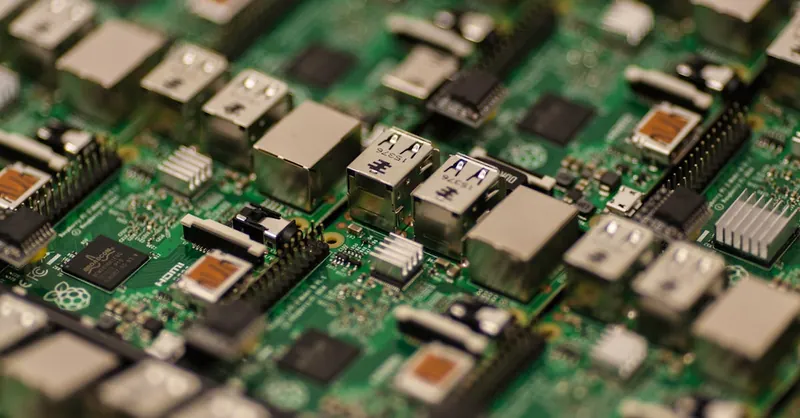
Image courtesy of Craig Dennis
Advanced Data Handling and Cloud Integration for Raspberry Pi IoT Projects
Harnessing the full potential of Raspberry Pi IoT projects requires more than just local data acquisition and device control—it revolves around advanced data management and seamless cloud integration. By leveraging leading cloud platforms like AWS IoT Core, Microsoft Azure IoT Hub, and Google Cloud IoT Core, developers can unlock powerful features such as scalable device provisioning, secure telemetry ingestion, and robust remote management. These platforms provide comprehensive IoT ecosystems supporting data ingestion pipelines, messaging protocols, device twins, and rule-based automation that elevate Raspberry Pi projects from basic sensor nodes to enterprise-grade connected devices.
Leveraging Cloud Platforms for Scalable IoT Solutions
- AWS IoT Core: Offers a fully managed service to connect Raspberry Pi devices securely using MQTT or HTTP protocols. Features include device shadows for state synchronization, built-in rules engine for data processing, and seamless integration with AWS analytics and machine learning services.
- Azure IoT Hub: Provides reliable bi-directional communication between Raspberry Pi devices and Azure cloud solutions. It supports device provisioning, conditional alerts, and telemetry data routing to services such as Azure Stream Analytics and Power BI for actionable insights.
- Google Cloud IoT Core: Enables secure device connection and management using MQTT and HTTP bridges. It integrates naturally with Google’s BigQuery and Cloud Functions, allowing real-time data analytics and event-driven workflows from Raspberry Pi sensor feeds.
Real-Time Data Visualization and Analytics
Cloud integration empowers Raspberry Pi projects with real-time data visualization dashboards and analytics that help interpret complex IoT datasets effortlessly. Tools like Grafana, Power BI, or Google Data Studio can connect to cloud databases or messaging services to render intuitive charts, graphs, and geospatial maps. Additionally, serverless computing and edge AI models can be triggered based on cloud-processed data, enabling predictive maintenance, anomaly detection, and automated control strategies that drastically improve system responsiveness and reliability.
Best Practices for Secure and Efficient Data Handling
- Data Serialization: Use efficient formats like JSON or Protocol Buffers to minimize payload sizes during cloud transmission.
- Data Encryption: Ensure end-to-end encryption with TLS/SSL to protect sensitive IoT telemetry and commands.
- Edge Processing: Implement local data filtering or aggregation on Raspberry Pi to reduce cloud bandwidth usage and latency.
- Automated Scaling: Take advantage of cloud platform auto-scaling and serverless architectures to handle varying workloads without manual intervention.
By integrating advanced data handling techniques and leveraging cloud IoT services, Raspberry Pi projects transcend traditional boundaries, enabling scalable, intelligent, and secure Internet of Things solutions that meet modern embedded system demands.

Image courtesy of Negative Space
Security Best Practices in Raspberry Pi IoT Projects
Securing your Raspberry Pi IoT projects is paramount to safeguarding sensitive data, maintaining device integrity, and ensuring reliable operation in connected environments. Embedded IoT devices often face vulnerabilities such as unauthorized access, data interception, and infiltration attacks, making it critical to implement robust security best practices from the outset. Key areas to focus on include securing credentials, implementing strong device authentication, encrypting data communications, and applying comprehensive network hardening techniques tailored for embedded systems.
Securing Credentials and Device Authentication
- Use Strong, Unique Passwords: Default Raspberry Pi credentials must be changed immediately. Employ complex passwords or passphrases, and consider using tools like
ssh-keygenfor secure SSH key authentication instead of passwords. - Implement Multi-Factor Authentication (MFA): Where possible, add MFA to remote access points and cloud management consoles to reduce the risk of compromised accounts.
- Store Secrets Securely: Avoid hardcoding usernames, passwords, tokens, or encryption keys directly into your source code. Use secure storage solutions such as environment variables, encrypted credential stores like HashiCorp Vault, or hardware security modules (HSMs).
- Device Authentication: Incorporate mutual TLS or certificate-based authentication to verify the identity of Raspberry Pi devices communicating with IoT platforms, ensuring only authorized endpoints participate in your network.
Data Encryption for Privacy and Integrity
- TLS/SSL Encryption: Always encrypt data in transit using TLS (Transport Layer Security) to protect sensitive telemetry and command data against eavesdropping and man-in-the-middle attacks.
- End-to-End Encryption (E2EE): For highly sensitive applications, implement E2EE protocols so data is encrypted from the Raspberry Pi device all the way to cloud services or other endpoints.
- Secure Local Storage: Encrypt data stored locally on the Raspberry Pi using file system encryption techniques such as LUKS or dm-crypt to prevent data leakage if the physical device is compromised.
Network Hardening Techniques for Embedded IoT Devices
- Disable Unnecessary Services: Minimize the attack surface by turning off unused network services and daemons on your Raspberry Pi. This includes disabling unused ports, Bluetooth, or Wi-Fi modules if not required.
- Firewall Configuration: Use firewall tools like
ufw(Uncomplicated Firewall) or iptables to restrict inbound and outbound traffic, allowing only trusted IP ranges and essential protocols. - Regular Software and Firmware Updates: Maintain up-to-date Linux kernel, IoT libraries, and application dependencies to patch known vulnerabilities promptly.
- Network Segmentation: Isolate IoT devices within a separate VLAN or subnet to limit exposure to other network resources and reduce lateral movement risks in case of device compromise.
- SSH Security Enhancements: Implement SSH best practices such as disabling root login, changing default SSH port, using key-based authentication exclusively, and employing tools like fail2ban to block repeated unauthorized access attempts.
Together, these security best practices form a comprehensive defense-in-depth strategy essential for resilient Raspberry Pi IoT projects. They safeguard device credentials, enforce trusted communication channels, and fortify embedded systems against the evolving landscape of cyber threats, ensuring your connected solutions maintain confidentiality, integrity, and availability in real-world deployments.
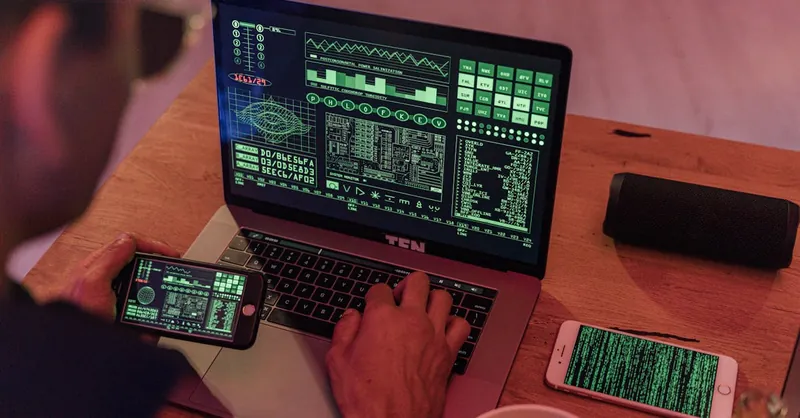
Image courtesy of Antoni Shkraba Studio
Troubleshooting and Performance Optimization in Raspberry Pi IoT Projects
Building reliable and high-performance Raspberry Pi IoT systems involves more than just assembling hardware and writing code—it requires effective troubleshooting methods, smart power management, and code optimization to ensure real-time responsiveness and system stability. Understanding common issues in Raspberry Pi IoT builds and applying systematic debugging steps will save you time and improve the overall reliability of your projects.
Common Issues and Debugging Methods
Raspberry Pi IoT projects often face challenges such as connectivity failures, sensor inaccuracies, and software crashes due to resource constraints or improper configurations. To diagnose and resolve these, consider the following approaches:
- Hardware Checks: Verify power supply stability and confirm all sensor and actuator connections are secure. Faulty wiring or insufficient current can cause intermittent behavior.
- Log Analysis: Use system logs (
/var/log/syslog,dmesg) and application-level logging to identify error messages or failed service launches. - Network Diagnostics: Test network status using
ping,ifconfig, and MQTT broker connection health checks to troubleshoot Wi-Fi or Ethernet issues. - GPIO Debugging: Validate GPIO pin states with multimeters or logic analyzers and isolate pin conflicts or driver misconfigurations.
- Resource Monitoring: Use tools like
top,htop, orvmstatto monitor CPU, memory, and disk I/O to detect resource exhaustion leading to slowdowns or crashes. - Stepwise Code Testing: Integrate unit tests and run modular code segments independently to isolate logic errors and improve stability.
- Remote Debugging: Leverage remote debugging tools such as
gdbserverfor C/C++ or Python’spdbto inspect live code behaviors on the Raspberry Pi device.
Implementing a structured troubleshooting workflow empowers developers to quickly locate problems and iteratively enhance their Raspberry Pi IoT systems.
Power Management Strategies for IoT Devices
Efficient power management plays a critical role in extending the operational lifetime of Raspberry Pi IoT devices, especially for off-grid or battery-powered deployments. Key strategies include:
- Optimizing Power Supply: Use regulated power adapters or UPS HATs with stable voltage output to prevent unexpected reboots and protect hardware components.
- Selective Peripheral Power: Power down unused sensors, actuators, or communication modules programmatically or via hardware switches to minimize energy drain.
- CPU Frequency Scaling: Utilize Raspberry Pi’s dynamic frequency scaling (
cpufreq) to reduce CPU clock speed during idle periods, decreasing power consumption. - Sleep and Wake Modes: Although Raspberry Pi lacks built-in deep sleep, creative solutions using external microcontrollers or RTC modules can enable low-power sleep states between data acquisition intervals.
- Efficient Networking: Employ low-power communication protocols (e.g., MQTT with QoS 0), batch transmissions, and adaptive polling intervals to balance connectivity with power usage.
Adopting these power optimization techniques ensures your Raspberry Pi IoT projects remain sustainable and functional in energy-constrained environments.
Optimizing Code for Real-Time Responsiveness
Performance tuning your Raspberry Pi IoT applications is crucial for achieving real-time data processing and rapid actuator response, particularly in automation, security, and monitoring tasks. Best practices to optimize code performance include:
- Use Efficient Libraries: Prefer lightweight libraries and native code in C/C++ where timing precision and low-latency control are required.
- Minimize Blocking Calls: Implement asynchronous programming and event-driven frameworks (e.g., Python’s
asyncio) to prevent CPU stalling during sensor read or network waits. - GPIO Access Optimization: Utilize direct memory access or fast GPIO libraries (
pigpio,bcm2835) instead of slower GPIO abstractions to speed up pin toggling and sensor interactions. - Code Profiling: Employ profiling tools (
cProfilefor Python,gproffor C/C++) to detect and eliminate bottlenecks or unnecessary computations. - Optimize Data Handling: Use binary serialization formats (like Protocol Buffers) and buffer data transmissions to reduce processing overhead.
- Threading and Multiprocessing: Leverage concurrent execution where appropriate to parallelize data acquisition, processing, and communication tasks without blocking critical operations.
By integrating these code optimizations, Raspberry Pi IoT projects can respond swiftly to external stimuli, maintain smooth operation under load, and deliver actionable insights in real-time embedded applications.
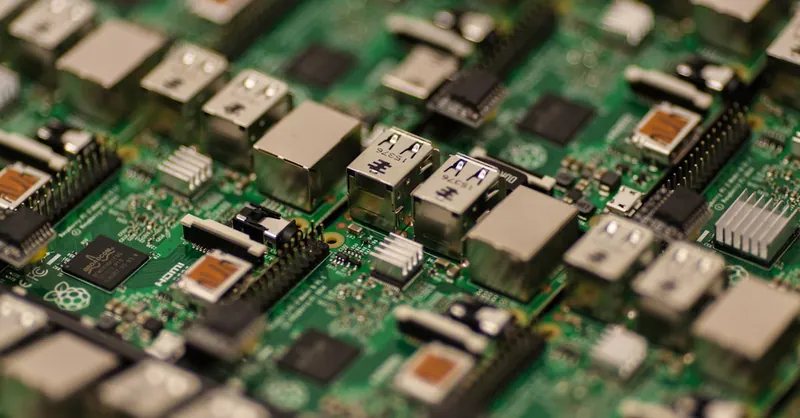
Image courtesy of Craig Dennis
Showcase of Innovative Raspberry Pi IoT Projects
Exploring real-world Raspberry Pi IoT projects crafted by the global maker and developer community offers invaluable insights into the endless possibilities this platform provides. These complex and creative projects demonstrate how Raspberry Pi, combined with diverse sensors and robust programming in Python or C/C++, can solve pressing challenges in smart agriculture, home automation, and environmental monitoring—all critical sectors shaping the future of IoT.
Smart Agriculture Applications
Raspberry Pi-based smart agriculture solutions leverage IoT technologies to increase crop yield, optimize resource usage, and enable sustainable farming practices. Common projects include:
- Automated Greenhouse Monitoring and Control: Using temperature, humidity, soil moisture, and light sensors, Raspberry Pi systems continuously monitor environmental conditions and automatically adjust irrigation, ventilation, or lighting through actuators and relays. This maximizes plant health while minimizing water and energy consumption.
- Precision Irrigation Systems: Integrating wireless soil moisture sensors with cloud-connected Raspberry Pi units, farmers receive real-time data and can trigger optimized watering schedules remotely via mobile apps or MQTT-enabled dashboards.
- Pest Detection with Computer Vision: Employing Raspberry Pi Camera Modules paired with machine learning models running at the edge, these projects detect pests or anomalies in crops early, enabling timely interventions and reducing pesticide use.
Advanced Home Automation Setups
Home automation projects reflect how Raspberry Pi's connectivity and processing capabilities enable smarter, more secure, and energy-efficient living environments:
- Integrated Smart Home Hubs: Raspberry Pi acts as the central controller interfacing with Zigbee or Z-Wave devices for lighting, climate control, security cameras, and door locks, all unified under customizable dashboards or voice assistant integrations.
- Energy Monitoring and Load Management: Utilizing current transformers and voltage sensors attached to the Pi, users track household energy usage live, setting automated schedules or alerts to reduce wastage and grid load.
- Multi-Room Environmental Control Systems: Distributed Raspberry Pi units manage HVAC and air quality sensors, dynamically adjusting airflow and filtration based on occupancy detected by PIR sensors and air quality readings.
Environmental and Industrial Monitoring Solutions
Raspberry Pi excels at gathering high-fidelity data in challenging and distributed environments, enabling advanced monitoring systems:
- Air Quality and Pollution Tracking Stations: Equipped with gas sensors (e.g., MQ series), particulate matter sensors, and GPS modules, these projects collect geotagged air quality data for urban and industrial areas, feeding analytics dashboards or open data platforms.
- Water Quality Monitoring: Using pH, turbidity, and temperature sensors interfaced with Raspberry Pi, remote water sources can be continuously assessed to detect contamination events promptly to safeguard public health.
- Industrial Equipment Condition Monitoring: Raspberry Pi combined with vibration and temperature sensors monitors machine health on factory floors. Data-driven predictive maintenance models deployed at the edge minimize downtime and operational costs.
Each of these innovative Raspberry Pi IoT projects exemplifies a fusion of hardware integration, embedded software development, and cloud connectivity—showcasing how comprehensive knowledge in sensor interfacing, protocol implementation, and secure networking can lead to scalable, impactful IoT solutions. By studying and adapting such community-driven projects, you can push your embedded systems skills beyond basics and contribute to cutting-edge applications in smart environments and IoT ecosystems.
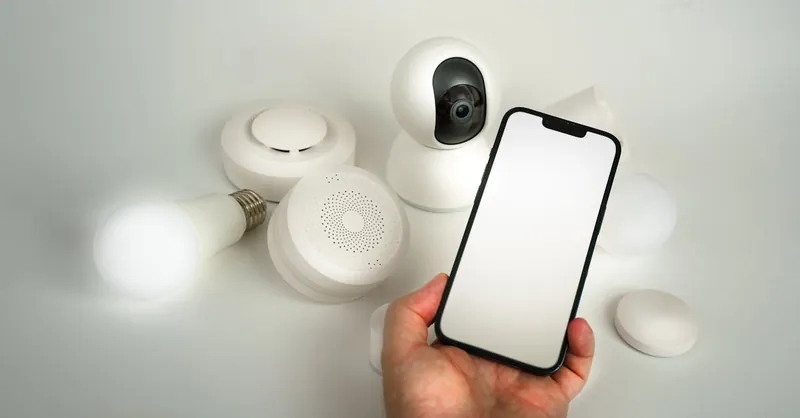
Image courtesy of Jakub Zerdzicki
Future Trends and Expanding Your IoT Skills with Raspberry Pi
As Raspberry Pi continues to evolve, emerging technologies and new paradigms in embedded systems are shaping the future of IoT development. Staying ahead by embracing machine learning at the edge, exploring next-generation Raspberry Pi hardware, and engaging with advanced learning resources will empower you to create smarter, more autonomous IoT solutions.
Emerging Raspberry Pi Technologies Driving IoT Innovation
The latest Raspberry Pi models, such as the Raspberry Pi 4 and Raspberry Pi Zero 2 W, offer enhanced CPU/GPU performance, increased RAM options, and improved connectivity, enabling more sophisticated edge computing tasks. Key trends transforming Raspberry Pi-based IoT projects include:
- Edge AI and Machine Learning: Utilizing frameworks like TensorFlow Lite or PyTorch Mobile, Raspberry Pi can perform real-time inference on sensor data locally without cloud dependency. This revolutionizes applications in predictive maintenance, anomaly detection, smart cameras, and voice recognition, reducing latency and enhancing privacy.
- 5G and Low-Power Wide Area Networks (LPWAN): Integration with 5G modems and LPWAN protocols such as LoRaWAN expands Raspberry Pi's connectivity in remote or low-bandwidth environments, supporting large-scale sensor networks and critical infrastructure monitoring.
- Advanced Sensor Fusion and Data Analytics: Combining multiple sensor inputs with embedded analytics boosts contextual awareness and decision-making capabilities within IoT devices, leading to adaptive control systems and smarter automation.
- Containerization and Edge Orchestration: Technologies like Docker and Kubernetes on Raspberry Pi allow scalable deployment and management of microservices-based architectures directly on edge devices, streamlining updates and enabling modular IoT applications.
Integrating Machine Learning at the Edge with Raspberry Pi
Edge computing powered by machine learning allows Raspberry Pi IoT devices to process data locally, making devices more autonomous and robust against network outages. Developers can:
- Train lightweight models tailored for on-device inference, suited for constrained resources.
- Use pre-trained models optimized for embedded platforms to perform tasks such as image classification, speech command recognition, or sensor anomaly detection.
- Implement efficient data pipelines that preprocess sensor inputs before inference, reducing computational load.
- Leverage hardware accelerators like Google Coral USB TPU or NVIDIA Jetson Nano (as companion devices) to significantly boost machine learning performance when paired with Raspberry Pi.
By integrating machine learning at the edge, your Raspberry Pi IoT projects become intelligent agents capable of dynamic adaptation, predictive insights, and real-time decision-making critical for next-generation embedded systems.
Continuous Learning Resources to Enhance Embedded IoT Skills
To keep pace with the rapidly advancing IoT landscape and deepen your expertise in Raspberry Pi and embedded systems, consider engaging with these valuable resources:
- Online Courses and Tutorials: Platforms such as Coursera, Udemy, and the Raspberry Pi Foundation provide specialized courses covering IoT architecture, Python/C++ programming, machine learning, and network security.
- Open-Source Communities and Forums: Active communities like Raspberry Pi Forums, Stack Overflow, and GitHub repositories offer code samples, project inspirations, and peer support critical for problem-solving and innovation.
- Technical Blogs and Research Papers: Regularly reading IoT-focused publications and academic research helps stay informed about emerging protocols, hardware advancements, and best software practices.
- Hands-On Hardware Experimentation: Experiment with new sensor modules, HATs, and communication interfaces—combining practical experience with theoretical knowledge accelerates learning and creativity.
- Industry Conferences and Webinars: Participating in IoT and embedded systems events fosters networking with experts, discovering cutting-edge trends, and gaining insights into real-world deployments.
By proactively expanding your skillset through these continuous learning avenues, you will be well-equipped to design and deploy advanced Raspberry Pi IoT systems that harness emerging technologies, maximize efficiency, and contribute to the future of smart embedded applications.
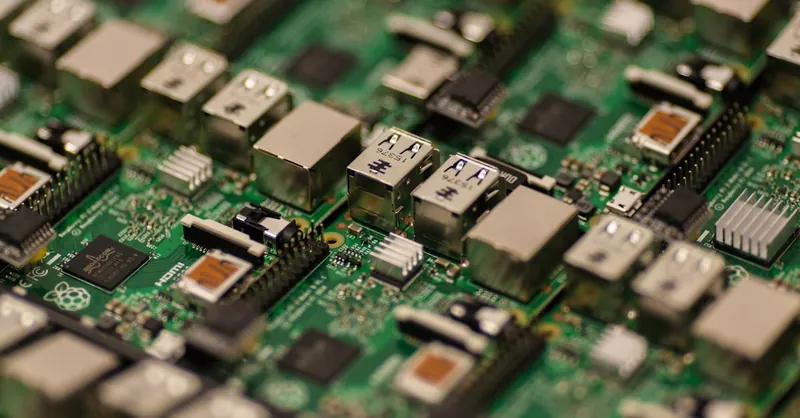
Image courtesy of Craig Dennis
